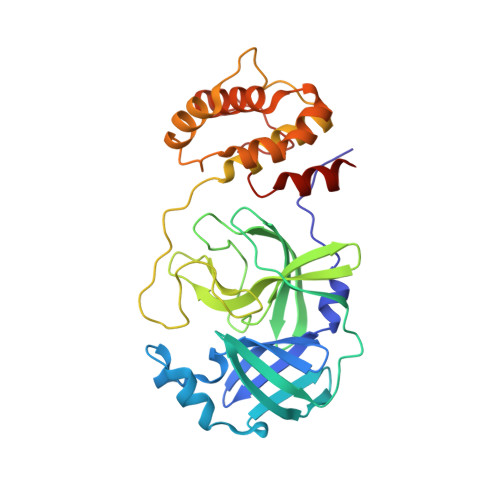Fragment-based screening targeting an open form of the SARS-CoV-2 main protease binding pocket.
Huang, C.Y., Metz, A., Lange, R., Artico, N., Potot, C., Hazemann, J., Muller, M., Dos Santos, M., Chambovey, A., Ritz, D., Eris, D., Meyer, S., Bourquin, G., Sharpe, M., Mac Sweeney, A.(2024) Acta Crystallogr D Struct Biol 80: 123-136
- PubMed: 38289714
- DOI: https://doi.org/10.1107/S2059798324000329
- Primary Citation of Related Structures:
7GRE, 7GRF, 7GRG, 7GRH, 7GRI, 7GRJ, 7GRK, 7GRL, 7GRM, 7GRN, 7GRO, 7GRP, 7GRQ, 7GRR, 7GRS, 7GRT, 7GRU, 7GRV, 7GRW, 7GRX, 7GRY, 7GRZ, 7GS0, 7GS1, 7GS2, 7GS3, 7GS4, 7GS5, 7GS6 - PubMed Abstract:
To identify starting points for therapeutics targeting SARS-CoV-2, the Paul Scherrer Institute and Idorsia decided to collaboratively perform an X-ray crystallographic fragment screen against its main protease. Fragment-based screening was carried out using crystals with a pronounced open conformation of the substrate-binding pocket. Of 631 soaked fragments, a total of 29 hits bound either in the active site (24 hits), a remote binding pocket (three hits) or at crystal-packing interfaces (two hits). Notably, two fragments with a pose that was sterically incompatible with a more occluded crystal form were identified. Two isatin-based electrophilic fragments bound covalently to the catalytic cysteine residue. The structures also revealed a surprisingly strong influence of the crystal form on the binding pose of three published fragments used as positive controls, with implications for fragment screening by crystallography.
- Swiss Light Source, Paul Scherrer Institute, 5232 Villigen PSI, Switzerland.
Organizational Affiliation:




















